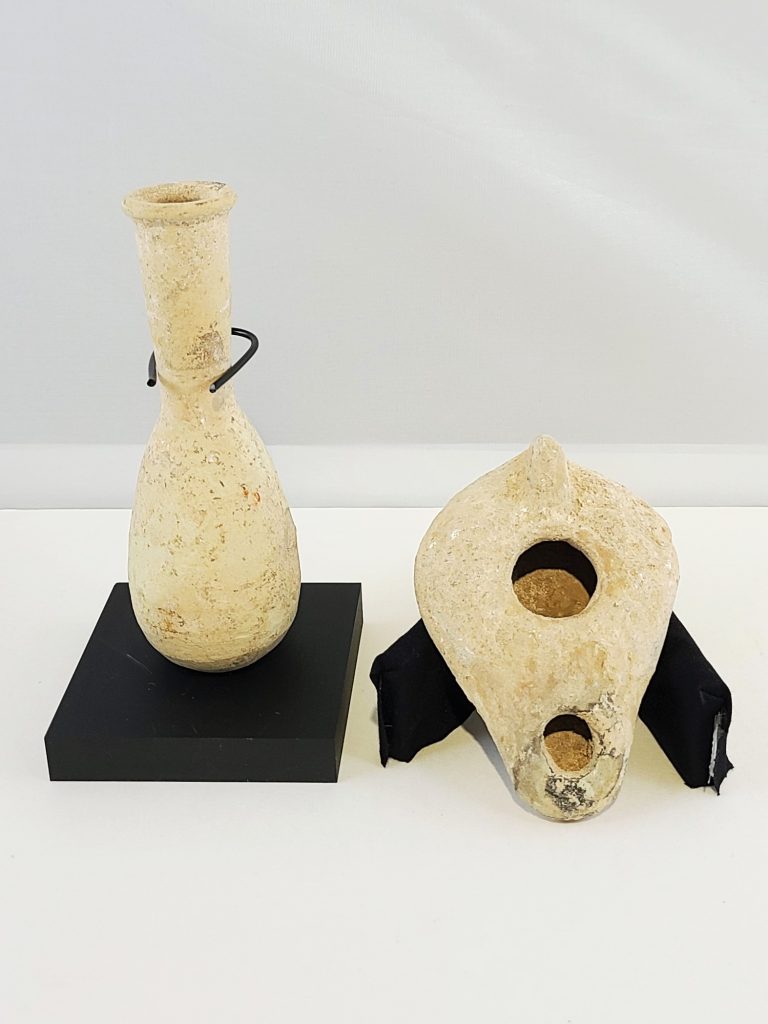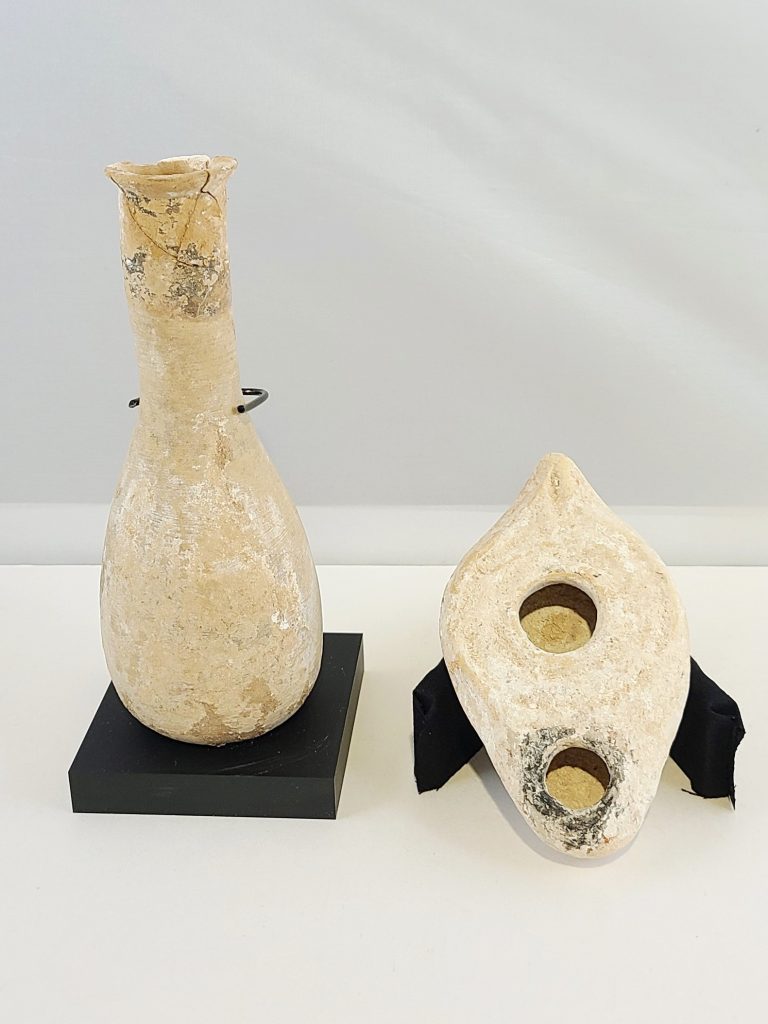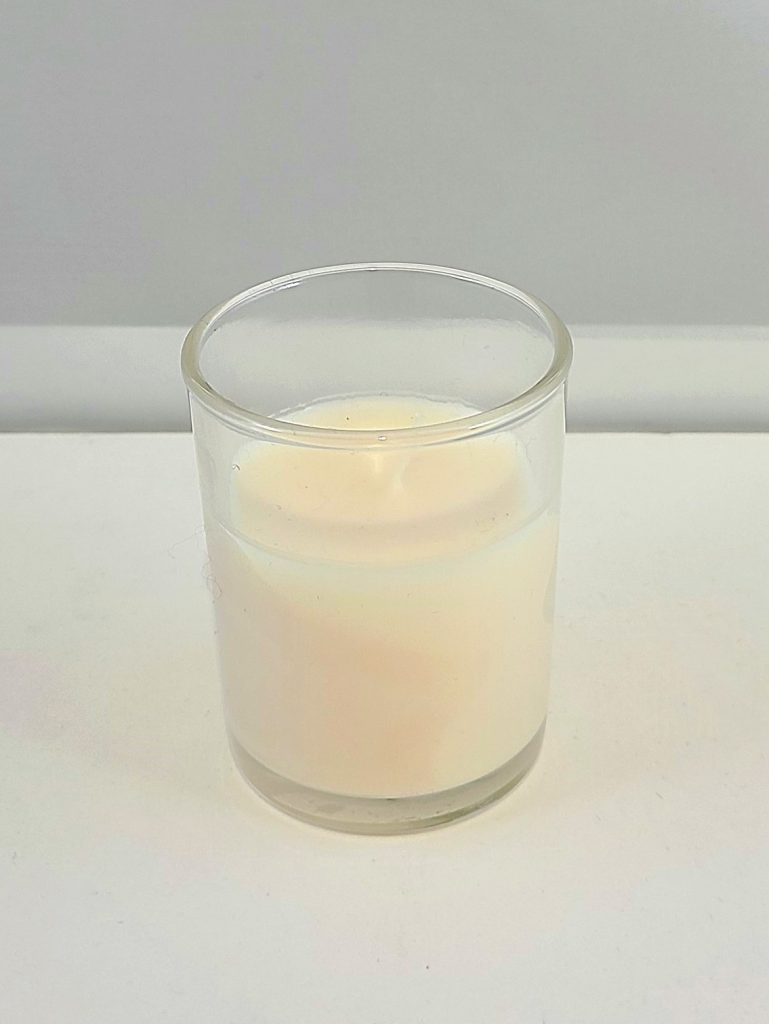Death and the Senses
Ancient rituals surrounding death engaged mourners’ senses with food and drink offerings, incense, and flickering oil lamps. Ceramic pieces facilitated these rituals and also served as grave goods.

Unguentarium
1st – 2nd c. CE
Oil Lamp
4th – 6th c. CE
Archaeologists often find perfume bottles and oil lamps like these in ancient graves. During funeral rites, the bereaved would have used them to pour libations or placed them in burials the same way people now put flowers on gravestones.

Unguentarium
1st – 2nd c. CE
Oil Lamp
4th – 6th century CE
Try to imagine these plain, static pots as dynamic parts of rituals that engaged the senses and bridged this world and the supernatural. The scent of incense, the flickering lamplight, and the feel and sound of trickling oil would have helped elevate these utilitarian objects to the level of symbolic offerings.

Votive Candle
21st c. CE
The use of lighting devices for religious and funerary rituals did not end in antiquity. People still leave candles on church altars and hold them in vigils of mourning or remembrance, just as the ancients used oil lamps.
